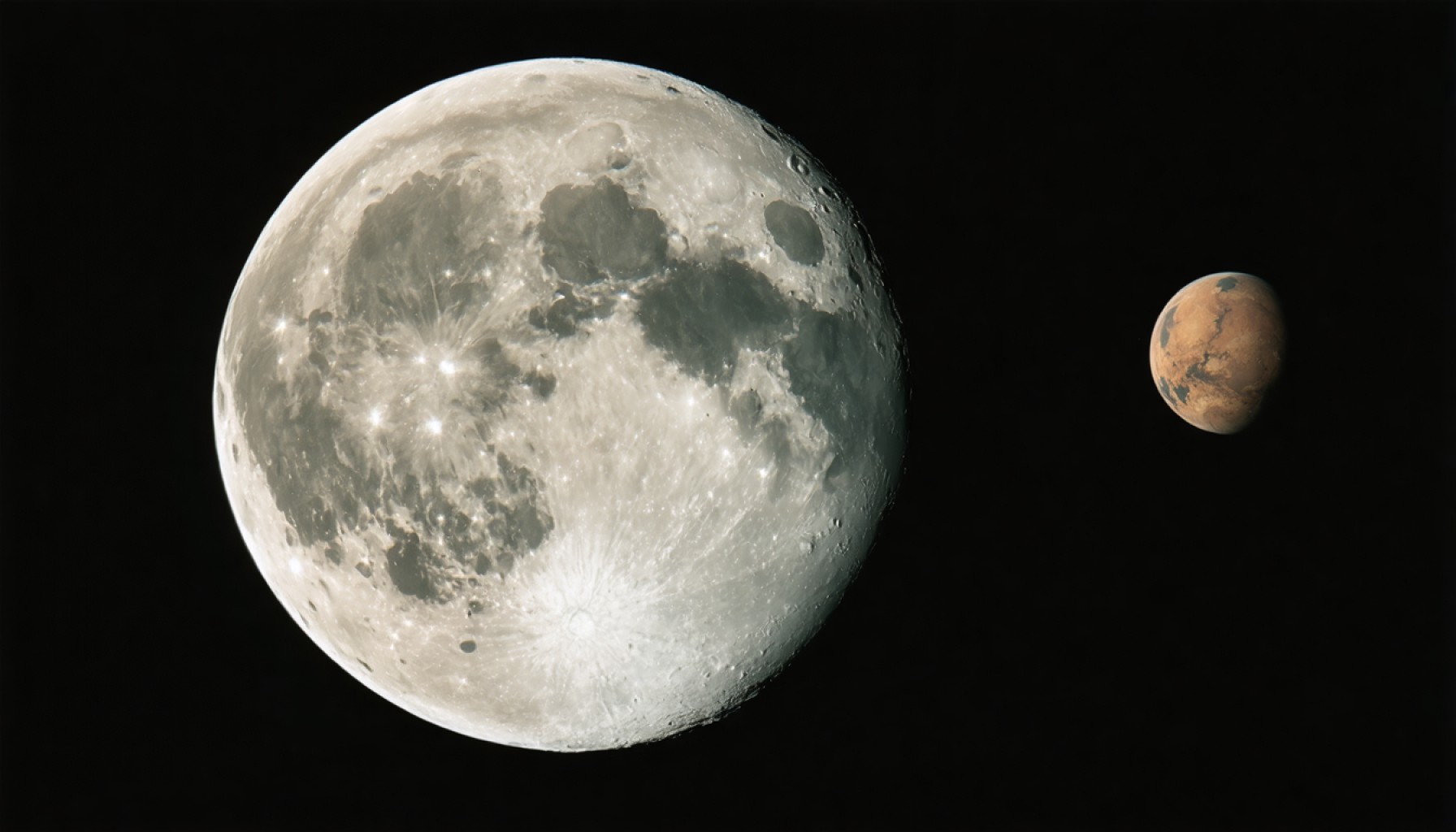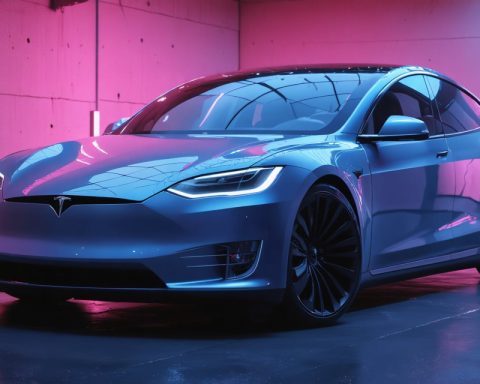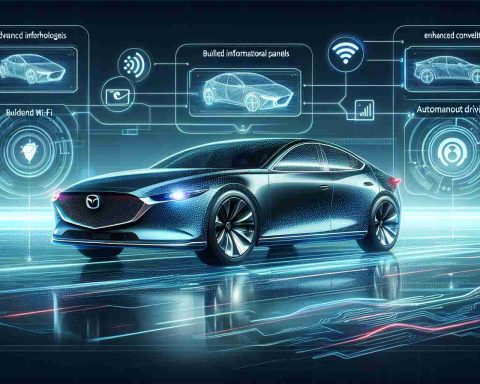- Elon Musk envisions a future where humanity becomes a multiplanetary species, with Mars as the primary target for colonization.
- SpaceX is at the forefront of technological innovation, transforming commercial space travel with its reusable Falcon rockets and the development of the Starship.
- Musk’s vision includes sustainable human colonies on Mars, featuring cities with glass domes and extraterrestrial agriculture.
- The success of recent Starship orbital flight tests underscores SpaceX’s progress and Musk’s unwavering commitment to space exploration.
- Musk challenges humanity to consider its broader role in the universe and contemplate the possibilities of life beyond Earth.
Elon Musk, the visionary brain behind groundbreaking companies like SpaceX and Tesla, reveals his audacious blueprint for humanity’s future beyond Earth. With a commanding presence and piercing ambitions, Musk articulates a future that challenges our very understanding of civilization. In a world that often seems fixated on terrestrial challenges, Musk’s gaze is set firmly on the stars.
SpaceX, the aerospace juggernaut Musk founded in 2002, has transformed the seemingly fantastical notion of commercial space travel into a tangible reality. The company’s Falcon rockets, with their awe-inspiring, reusable boosters, have redefined cost-efficiency in space missions. But for Musk, these feats are just the beginning.
Envisioning a Future Among the Stars
With a legacy reminiscent of the great explorers of yore, Musk sees the Moon as a stepping stone to humanity’s ultimate prize—Mars. His vision is not merely about exploration; it is about survival. “We must become a multiplanetary species,” Musk declares with unwavering conviction. For him, Mars is not just a red speck in the night sky but a new frontier brimming with promise and potential.
Through the development of the Starship, a behemoth rocket designed to ferry humans across the cosmic gulf, Musk seeks not only to land astronauts on Mars but to build a sustainable human colony there. He speaks of cities encased in glass domes and agriculture under alien skies—a vivid tapestry of human ingenuity and adaptability.
Innovation Under Pressure
Musk’s endeavors stretch beyond the bounds of mere technology. They ignite imaginations and challenge the global scientific community to push the envelope of what is possible. Critics might call his timelines overly optimistic, and admittedly, the journey up to this point is riddled with setbacks and fiery explosions. Yet, that undeterred spirit of innovation drives SpaceX’s relentless pace.
The recent successful orbital flight tests of the Starship are testaments to Musk’s commitment. Each launch sends ripples through the landscape of space exploration, bringing the dream of Mars within ever-closer reach.
The Elon Musk Takeaway
Elon Musk offers the world more than just technological marvels—he offers a new way to contemplate our place in the universe. His vision compels us to ask profound questions about the future of humanity. Are we content to remain Earth-bound, or do we dare to aspire for the stars?
In a realm where science meets audacity, Musk is the daring architect. His canvases are no longer spreadsheets or business models but worlds waiting to be embraced. He reminds us that while the Earth’s beauty is unparalleled, the voids of space beckon with opportunities yet unseen.
For humanity, the takeaway from Musk’s cosmic vision is clear: our greatest adventures are not behind us, but waiting to be discovered in the vast expanse beyond our pale blue dot.
Elon Musk’s Cosmic Vision: What Lies Beyond the Stars?
The Musk Revolution: Redefining Space Exploration
Elon Musk, renowned for his jaw-dropping ventures like Tesla and SpaceX, is not just dreaming of a future among the stars; he’s actively building it. SpaceX, founded in 2002, has catalyzed the commercial space industry with its reusable Falcon rockets, setting new standards for cost-efficiency and access to space.
However, Musk’s ambitions transcend orbiting Earth. His focus is on Mars—a celestial body poised to become the next frontier for human settlement. According to Elon Musk, transforming humanity into a multiplanetary species is not merely about exploration; it is about our survival.
The Road to Mars: Vision and Technology
SpaceX’s Starship is at the heart of Musk’s vision. Starship isn’t just a rocket; it’s a fully reusable spacecraft intended to propel humans on interplanetary journeys. Picture expansive Martian cities, shielded by glass domes and sustaining agriculture in a place with harsh climates and thin atmosphere.
Though challenges like radiation and supply chains loom large, Musk is undeterred. The complex supply chain needed to support such a vision requires innovation in everything from materials science to ecological sustenance of life in space.
Pressing Questions and Potential Setbacks:
1. How Feasible is Colonizing Mars?
– Creating a sustainable human presence on Mars involves massive technological and logistical challenges. Infrastructure, radiation protection, and life-sustaining resources are daunting hurdles, but SpaceX’s focus on reusable technology and cost-efficient launches is part of a broader strategy.
2. What Are the Safety and Health Concerns?
– Prolonged exposure to cosmic radiation and the psychological impact of living in isolation on another planet are significant concerns. Studies and comparisons with Earth’s environments (such as Antarctica) are ongoing to assess solutions.
3. What Kind of Timeline Are We Looking At?
– While Musk’s timelines often seem optimistic, SpaceX’s track record of achieving ambitious goals suggests that a human presence on Mars could be tangible within the next few decades.
Market Trends and Industry Impacts
SpaceX’s initiatives are not only pioneering but are also reshaping the aerospace industry. Analysts predict an increasing demand for satellite launches and commercial space travel opportunities. The successful deployment of Starlink, SpaceX’s internet satellite constellation, further illustrates how space-based technologies can revolutionize global communications.
Broader Implications: Sustainability and Ethics
Musk’s work inspires industry leaders to rethink sustainability. The aim is to ensure that interplanetary travel does not repeat the mistakes of terrestrial resource exploitation. Companies are being encouraged to develop technologies that minimize environmental footprints—both on Earth and in space.
Quick Tips for Aspiring Innovators
– Embrace Audacity: Bold visions often require challenging the status quo. Musk’s journey from electric vehicles to space travel is a testament to the power of daring ideas.
– Focus on Scalability: Reusable technology, such as SpaceX’s rockets, highlights the importance of designing scalable solutions to achieve sustainability.
– Leverage Multidisciplinary Collaboration: Innovation is rarely a solo endeavor. Teaming up across various scientific disciplines can lead to solutions that are as multifaceted as the problems they aim to solve.
In Conclusion
Elon Musk’s projects prompt us to rethink our relationship with the cosmos. His relentless pursuit of the stars encourages us to push technological boundaries while considering the ethical and sustainable aspects of space colonization. As we stand at the threshold of extraterrestrial ventures, Musk challenges humanity to dream—even beyond the stars.
For further insights into cutting-edge technology and space exploration, visit SpaceX and Tesla.



















